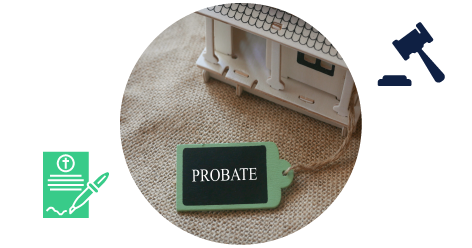How to Start Investing in Rental Property

If you've ever dreamed of cultivating a consistent stream of passive income, investing in rental properties may be precisely what you’re looking for.
With their potential for long-term appreciation, ability to diversify your portfolio, and potential tax perks that come with investing in rental property, it’s an incredible strategy for all types of investors.
In this blog, we’ll explore how to get started investing in rental property, what you need to know, how to do it, and so much more.
Let’s dive in.
Why Invest in Rental Property?
Understanding the Basics of Rental Property Investing
Steps to Start Investing in Rental Property
Why Invest in Rental Property?
Investing in rental property is one of the most popular investment strategies you can leverage. But, with the craziness of the housing market over the last few years, it can feel intimidating to jump in. The question becomes: “Why should I invest in rental property?”
The answer is that rental properties offer substantial unique advantages that other types of investments, including stocks and bonds, simply don’t. Let's take a closer look:
Investing in Rental Property Helps Create Passive Income Potential
The concept of earning money with minimal ongoing effort is undeniably attractive. Rental properties offer the opportunity to generate passive income.
Unlike traditional employment, rental properties can produce a consistent stream of cash flow with relatively little active involvement on your part. The rent payments continue to arrive month after month, providing you with a reliable source of income that isn't tied to your daily work schedule.
Investing in Rental Property Can Lead to Appreciation and Wealth Building
Rental income is a significant benefit, but it's not the only way rental properties contribute to wealth building. Real estate properties are one of the most popular investment assets due to the level at which they typically appreciate in value.
The property you purchase today could be worth considerably more in 6 months, a year, etc. Depending on the level of appreciation, it can lead to substantial gains when (or if) you ever decide to sell the property.
Investing in Rental Property Can Diversify Your Investment Portfolio
Diversification is a fundamental principle of investing, and investing in rental properties offers a means of achieving it. Adding real estate to your investment portfolio can reduce your overall risk by spreading your investments across different asset classes.
Real estate often behaves differently from stocks and bonds, providing a buffer against market volatility, enhancing the stability and resilience of your investment portfolio.
Understanding the Basics of Rental Property Investing
Before you set out to find your next property, it’s essential to understand the different types of rental properties you can invest in. Each class has advantages and challenges; your choice should depend on your investment goals, budget, and risk tolerance.
Let's explore the three main types of rental properties: single-family homes, multi-family properties, and commercial properties.
Types of Rental Properties
Single-Family Homes
Single-family homes are standalone residential properties designed to house one family. They are a popular choice for first-time real estate investors due to their relative affordability and ease of management.
In fact, single-family homes make up most of the country's housing inventory, with approximately 82.6 million single-family homes in the United States as of 2019 (U.S. Census Bureau, "Housing Units by Type and Size: 2019"). Typically, single-family homes are considered to be a straightforward entry point into the rental property market.
Multi-Family Properties
Multi-family properties consist of multiple residential units within a single building or complex. Common examples include duplexes, triplexes, and apartment buildings. Multi-family properties can offer economies of scale and the potential for higher cash flow.
The multi-family housing market is substantial, with approximately 4.3 million buildings with five or more units in the United States as of 2019 (U.S. Census Bureau, "Residential Buildings: 2019"). If you’re looking to scale your rental property portfolio, you may find multi-family properties attractive.
Commercial Properties
Commercial properties are buildings or land intended for business purposes, such as office spaces, retail stores, and industrial facilities. While commercial properties can require a higher initial investment and more complex management, they offer longer lease terms and higher rental rates.
According to the National Association of Realtors (NAR), the commercial real estate market in the United States was valued at approximately $16 trillion in 2019 ("2019 Commercial Real Estate Outlook"). Commercial Properties are not typically suitable for beginning rental property investors since it takes substantial capital and experience to properly execute a commercial rental strategy.
The Importance of Location
When it comes to rental property investing, location is a critical factor that can significantly impact the success of your investment. A property's location can influence rental demand, rates, tenant quality, and long-term appreciation potential.
In particular, let’s look at three key aspects of location that investors should consider when evaluating rental properties: proximity to amenities, employment opportunities, and neighborhood safety and quality.
Proximity to Amenities
Tenants often prioritize convenience and accessibility when searching for rental properties. Properties near essential amenities such as grocery stores, schools, healthcare facilities, and public transportation are generally more desirable to renters.
According to NAR, 78% of renters indicated that being within an easy walk of places and things to do was important to them ("2019 NAR Community and Transportation Preference Survey").
As an investor, selecting properties close to amenities can make your rental more desirable; you may even be able to charge higher rates and see increased occupancy rates.
Employment Opportunities
The availability of employment opportunities in the surrounding area can directly impact the demand for rental housing. Locations with a strong job market and diverse employment options will likely attract a steady stream of renters seeking job opportunities.
Typically, tenants in areas with more employment opportunities present a lower risk for landlords. Even if they lose their current job, their location gives them an edge, and they’re more likely to find another job quickly, ensuring they don’t fall behind on their rent.
Being in an area with plentiful employment opportunities is a top priority for most renters. As such, the Urban Land Institute (ULI) found that 85% of renters considered job availability to be a leading factor when choosing where to live ("Housing in the Evolving American Suburb: 2020").
Neighborhood Safety and Quality
Safety and quality of life are other critical considerations for tenants when selecting a rental property. Neighborhoods with low crime rates, well-maintained infrastructure, and a strong sense of community are often more appealing to renters.
According to a 2020 survey by Apartment List, 84% of renters rated neighborhood safety as a top priority when searching for a rental ("2020 Renter Preferences Report"). Prioritizing properties in safe and well-regarded neighborhoods can lead to higher tenant satisfaction, longer tenancies, and a positive reputation for your rental property.
Steps to Start Investing in Rental Property
Embarking on your journey as a rental property investor requires careful planning and a clear understanding of your investment goals. By setting well-defined objectives, you can make informed decisions that align with your financial aspirations and risk tolerance. Let's explore the initial steps to start investing in rental property, beginning with setting your investment goals.
Step 1: Set Your Investment Goals
Before purchasing your first rental property, it's essential to establish your investment goals. These goals will guide your decision-making process and help you select properties that meet your criteria. When setting your investment goals, two great places to start are cash flow versus appreciation and short-term versus long-term investment.
Cash Flow vs. Appreciation
As a rental property investor, you can generate income in two primary ways: cash flow and appreciation. Cash flow refers to the net income generated from rental payments after deducting expenses such as mortgage payments, maintenance costs, and property taxes.
For instance, you’ll want to factor in the median gross residential rent into your cash flow calculations. For example, the U.S. Census Bureau, the median monthly gross residential rent in the United States was $1,163 in 2021,
On the other hand, Appreciation refers to the increase in the property's value over time. Investors who prioritize cash flow may focus on properties with strong rental demand and stable rental income, while those seeking appreciation may target properties in up-and-coming neighborhoods with growth potential.
Short-Term vs. Long-Term Investment
Another important consideration when setting your investment goals is the investment horizon.
Are you looking for a short-term investment with the potential for quick returns, or are you interested in a long-term investment that can provide steady income and appreciation over the years? Short-term investments, such as fix-and-flip properties, require much more capital upfront but can demand higher rental rates.
Conversely, longer-term buy-and-hold rental properties will be much cheaper to acquire, but they will command lower rental rates. Usually, the expenses will come later when you decide to upgrade your rental property after holding it for a few years.
Understanding your desired investment timeline will help you select properties that align with your goals and risk profile.
Step 2: Assess Your Financial Situation
After setting your investment goals, the next step is to assess your financial situation. Investing in rental property requires capital, and understanding your financial position will help you determine how much you can afford to invest and what financing options are available.
In this step, we'll explore two key aspects of assessing your financial situation: budgeting and saving for a down payment and understanding financing options.
Budgeting and Saving for a Down Payment
Purchasing a rental property typically requires a down payment, a percentage of the property's purchase price that you pay upfront. Saving for a down payment is a critical component of your financial preparation. For planning purposes, according to the National Association of Realtors, the median down payment for investment properties in 2020 was 12% ("2020 Profile of Home Buyers and Sellers").
To accumulate the necessary funds, you'll want to create a budget, identify areas where you can reduce expenses, and set aside money regularly. Consider opening a dedicated savings account for your down payment and exploring additional income sources to accelerate your savings.
Understanding Financing Options
Once you've saved for a down payment, you can explore financing options. Most investors rely on mortgage loans to finance the purchase of rental properties. Various types of mortgage loans are available, including conventional loans, FHA loans, and VA loans, each with its own eligibility criteria and terms.
Interest rates and loan terms can vary widely, so shopping around and comparing offers from multiple lenders is highly recommended.
Remember that lenders may have stricter requirements for investment properties than they do for primary residences, including higher credit score standards and larger down payments.
Step 3: Conduct Market Research
Once you've assessed your financial situation, the next step is to conduct market research to identify promising investment opportunities. Thorough market research allows you to make data-driven decisions and select properties that align with your investment goals. In particular, we’ll look at analyzing rental and vacancy rates, and identifying emerging markets.
Analyzing Rental Rates and Vacancy Rates
Understanding rental and vacancy rates in your target market is crucial for evaluating a rental property's potential return on investment.
Rental rates provide insight into the amount of rental income you can expect to generate, while vacancy rates indicate the demand for rental housing in the area. According to the U.S. Census Bureau, the national rental vacancy rate in the third quarter of 2021 was 5.8% ("Residential Vacancies and Homeownership: Third Quarter 2021").
The national vacancy rate provides a benchmark for assessing local vacancy rates, but it’s not the end-all-be-all. You’ll want to ensure you conduct diligence for your local market. You can determine whether the potential rental income aligns with your cash flow goals by analyzing rental rates.
Additionally, assessing vacancy rates can help you gauge the stability of the rental market and the likelihood of finding tenants. Low vacancy rates suggest strong rental demand and a lower risk of extended vacancies, while high vacancy rates may indicate a less competitive rental market.
Identifying Emerging Markets
Emerging markets are areas that show signs of growth and development, making them attractive for real estate investment. Identifying emerging markets involves analyzing population growth, job creation, infrastructure development, and real estate trends. Investing in an emerging market can offer the potential for higher appreciation and rental demand as the area continues to develop.
Investors can use local economic development reports, real estate market analyses, and demographic data to identify emerging markets. Staying informed about local zoning changes, planned developments, and government initiatives can also provide valuable insights into areas poised for growth.
Step 4: Evaluate Potential Properties
After conducting market research and identifying promising investment opportunities, the next step is to evaluate potential properties. You can do this in a few ways, including assessing the physical condition of the property, estimating maintenance needs, and calculating the potential return on investment (ROI). In this step, we'll explore property condition and maintenance needs and calculating ROI.
Property Condition and Maintenance Needs
Properties in good condition may require minimal repairs and maintenance, allowing you to start generating rental income more quickly. On the other hand, properties needing significant repairs may offer a lower purchase price but require a more considerable investment in renovations.
When evaluating a property's condition, conduct a thorough inspection to identify any potential issues, such as structural damage, outdated electrical or plumbing systems, and signs of water damage. Hiring a professional home inspector can provide valuable insights into the property's condition and help you estimate the cost of necessary repairs.
Calculating Return on Investment (ROI)
ROI is a measure of the profitability of an investment, expressed as a percentage of the initial investment cost. To calculate ROI, consider the purchase price, expected rental income, operating expenses, and potential appreciation.
The formula for calculating ROI is as follows:
ROI = (Net Income / Investment Cost) x 100%
For example, if you purchase a rental property for $200,000, generate an annual rental income of $24,000, and incur annual expenses of $8,000, your net income would be $16,000. The ROI would be:
ROI = ($16,000 / $200,000) x 100% = 8%
It's important to note that ROI is just one metric to consider when evaluating rental properties. Other metrics, such as cash-on-cash return and capitalization rate, can also provide valuable insights into a property's financial performance.
Step 5: Make an Offer and Close the Deal
Once you've evaluated potential properties and identified one that aligns with your investment goals, the next step is to make an offer and close the deal. This stage involves negotiating the purchase price, conducting due diligence to ensure no hidden issues, and finalizing the transaction. Let's explore each of these steps in more detail.
Negotiating the Purchase Price
Your goal when negotiating is to reach an agreement with the seller that reflects the property's fair market value while aligning with your investment objectives.
Effective negotiation comes down to being well-informed about the local real estate market, recent comparable sales, and the property's condition.
Consider working with a real estate agent who can provide valuable insights and represent your interests during negotiations. Remember that negotiation is a two-way process, and being flexible and open to compromise can increase the likelihood of reaching a mutually beneficial agreement.
Conducting Due Diligence
Due diligence is conducted by thoroughly investigating a property before finalizing the purchase. During this phase, you'll want to verify information about the property, such as the accuracy of the property listing, the status of the title, and any outstanding liens or encumbrances.
A professional home inspection is a crucial component of due diligence, as it can reveal hidden defects or maintenance issues that may impact the property's value.
Lastly, review local zoning regulations, rental market data, and applicable homeowners' association (HOA) rules.
Finalizing the Transaction
After completing due diligence and resolving any outstanding issues, the final step is to close the deal. The closing process involves signing the purchase agreement, securing financing (if applicable), and transferring property ownership.
During closing, you'll also be responsible for paying any closing costs, including fees for title insurance, appraisal, escrow, and legal services. It's important to review all closing documents carefully and ensure that the transaction terms are accurately reflected.
Once the closing process is complete, you'll officially become a rental property owner!
Conclusion
Rental property investing offers a unique and compelling opportunity for individuals seeking to build wealth, generate passive income, and diversify their investment portfolios.
As we've explored in this guide, the journey to becoming a successful rental property investor involves several key steps, each of which plays a crucial role in shaping your investment outcomes.
Every step requires careful consideration and due diligence, from setting clear investment goals and assessing your financial situation to conducting market research and evaluating potential properties.
It's essential to understand the different types of rental properties available, the importance of location, and the metrics used to calculate return on investment. Effective negotiation, thorough due diligence, and a smooth closing process are integral to a successful transaction.


